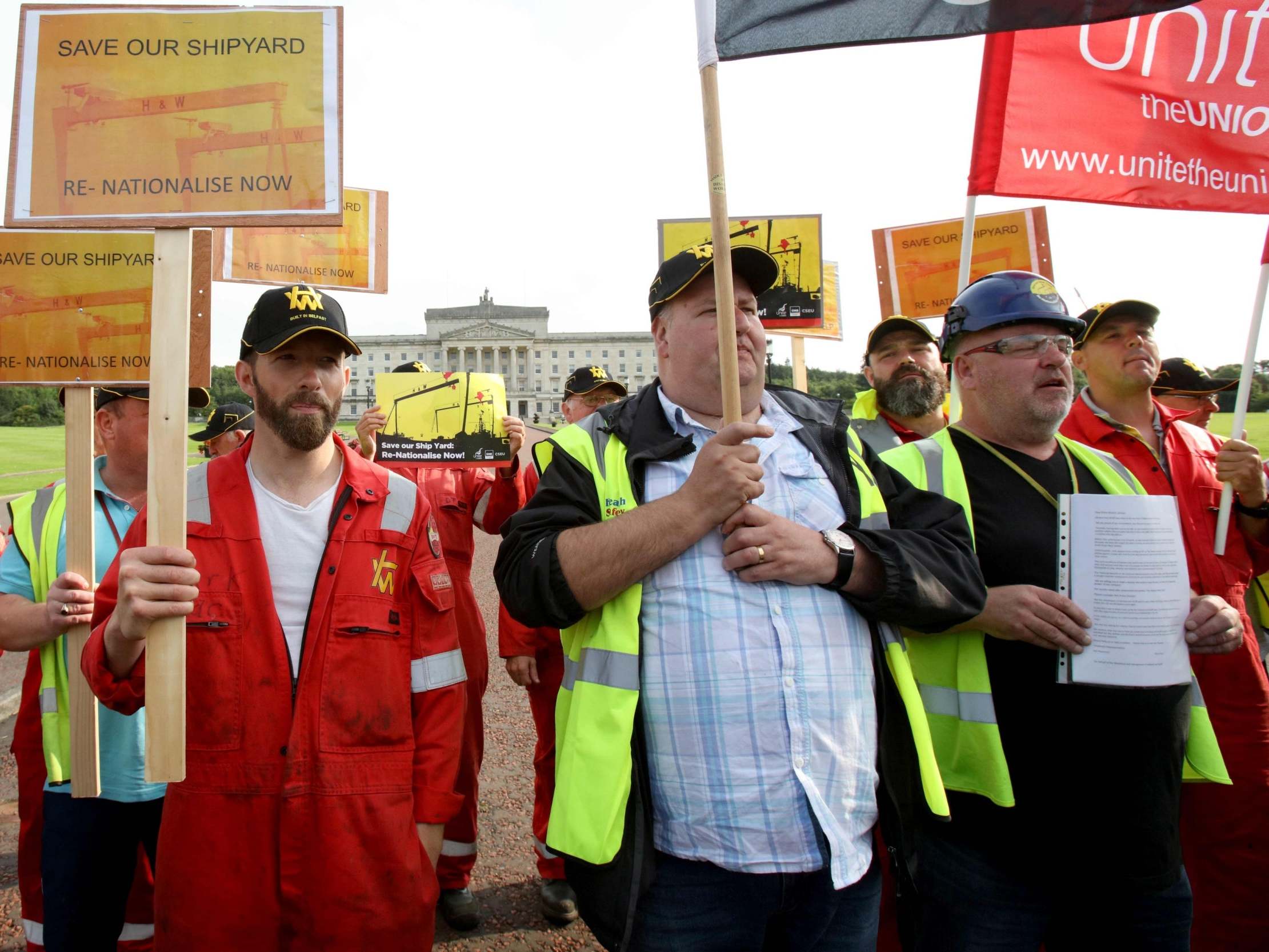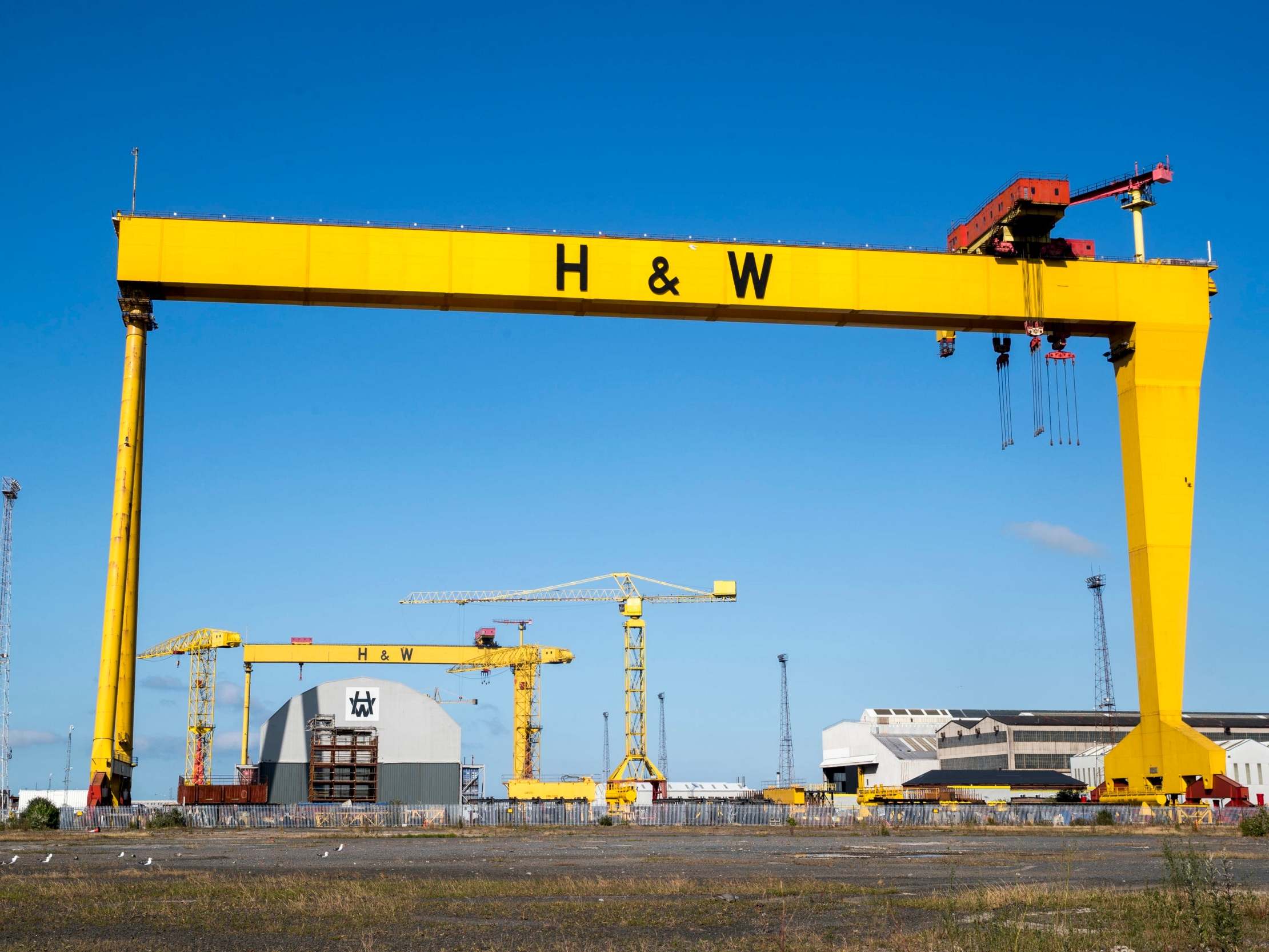Belfast shipyard that built the Titanic falls into administration
Workers lock themselves inside once-booming Second World War shipyard amid fears 130 jobs could be lost

Your support helps us to tell the story
From reproductive rights to climate change to Big Tech, The Independent is on the ground when the story is developing. Whether it's investigating the financials of Elon Musk's pro-Trump PAC or producing our latest documentary, 'The A Word', which shines a light on the American women fighting for reproductive rights, we know how important it is to parse out the facts from the messaging.
At such a critical moment in US history, we need reporters on the ground. Your donation allows us to keep sending journalists to speak to both sides of the story.
The Independent is trusted by Americans across the entire political spectrum. And unlike many other quality news outlets, we choose not to lock Americans out of our reporting and analysis with paywalls. We believe quality journalism should be available to everyone, paid for by those who can afford it.
Your support makes all the difference.Harland and Wolff, the Belfast shipyard that built the Titanic, will be put into administration on Monday after its bankrupt Norwegian owner failed to find a buyer, as a union supporting its workers called for the yard to be renationalised.
The shipyard, whose towering yellow cranes dominate the Northern Irish city’s skyline, has been occupied by workers fearful for their jobs since last week. They said on Monday they would block administrators from entering the site.
“There has been a series of board meetings, the result of which is that administrators will be appointed over the course of the day,” a Harland and Wolff spokesman said.
The business was put up for sale last year by Norwegian parent Dolphin Drilling, which filed for bankruptcy in June. The Norwegian administrator of Dolphin Drilling did not immediately respond to a request for comment on Monday.
Opened in 1861, Harland and Wolff employed more than 30,000 people in its Second World War heyday and remains a potent symbol of Belfast’s past as an industrial engine of the British Empire.
It has been in decline for over half a century, however, and now employs just 130 full-time workers, specialising in energy and marine engineering projects.
The workers locked themselves into the yard last week and are taking turns occupying key buildings in a bid to take control of a process they fear will deprive them of their jobs.
Susan Fitzgerald, a official at trade union Unite, called on Monday for the British government to take the yard back into public ownership, echoing a letter given by members to new the new prime minister, Boris Johnson, last week.

“In the absence of politicians and other people creating a space for a solution to be found – we have already advanced what we think it is, that’s renationalisation,” she said.
Ms Fitzgerald said she was concerned by media reports that the yard might be sold by administrators without liabilities such as pensions and workers’ contracts, adding: “This would be a cynical move designed to jettison jobs and workers.”
Harland and Wolff was state-owned from 1975 to 1989.
A British government spokesman said the yard’s fate was a commercial issue.
The drilling rig business of Dolphin Drilling was restructured in late June, allowing those operations to continue under a new holding company incorporated in Jersey.
Reuters
Join our commenting forum
Join thought-provoking conversations, follow other Independent readers and see their replies
0Comments